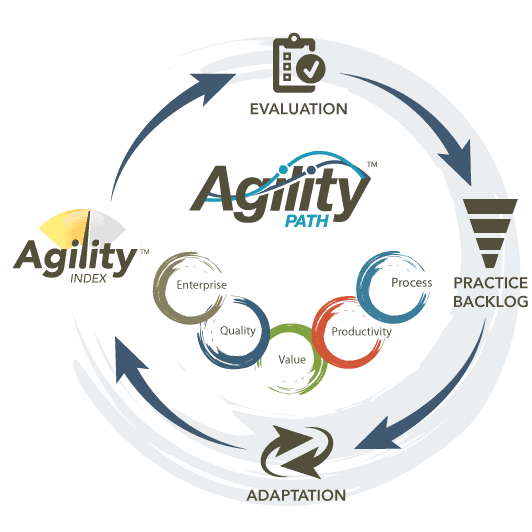The Role of Measuring Value in Measuring Success & The Contribution of Scrum
Success is often linked to the efficient handling of a project's scope, time, and budget. However, the true success of a project is highly linked to its value aspect. So, let's explore the role of measuring value in measuring success.

In the software industry, the development team works with the core agenda of delivering "valuable" software products. But what does "value" truly mean in project success, and how can it be measured?
The value element is not quantifiable compared to other success parameters, such as timely delivery, requirements fulfillment, etc. So, if a team fails to measure the value, then this crucial aspect remains meaningless. However, this does not mean that you have to quantify value somehow. You can evaluate the value aspect in the sense of whether the team is delivering value to customers. In this article, we will thoroughly examine the role of measuring value in measuring success and how Scrum contributes to this situation.
The Traditional Way of Measuring Success
For decades, success in software development has been linked to three elements:
- Fulfillment of all requirements
- Completing the project within the timeframe
- Accomplishing the whole software development process within the assigned budget
In simple words, requirements, time, and budget are considered the measuring aspects of success in a project.
What most teams do is that they intend to analyze, describe, and detail all requirements upfront and get approval before starting the development. They emphasize getting all the requirements finalized to fulfill the "requirements" attribute of success.
After requirements, the team gets deep into calculating the software delivery aspects. The goal is to set the other two success attributes, i.e., time and budget. This leads to the development of a comprehensive plan that reflects the budget and delivery time, including some extra time allocated for risk mitigation or exceptional cases.
Once all three success attributes are planned and approved, the team begins the software development process. Now what is left is to follow the plan to achieve "success". Even if the team has to deviate slightly from the plan, it can easily handle it because it includes extra time for risk mitigation and exceptional cases.
Is the Traditional Way of Measuring Success Meaningful Today?
The traditional way of measuring success discussed above is still believed to be the right way to determine success in software development. However, ground realities are a bit different. The below points reflect the flaws in this approach to measuring success:
- The involvement of extra time for risk mitigation and exceptional scenarios reflects that the project is vulnerable to complications despite thorough planning.
- Many projects fail even if the team makes all the effort to plan everything proficiently. The Standish Group's Annual CHAOS 2020 report shows that 66% of technology projects face complete or partial failure.
- Many projects, after their completion, don't meet all the requirements, time, and budget targets. They might have to skip a few features, require more delivery time, or need extra budget. Harvard Business Review (HBR) reports that IT projects' average budget overrun is 27%.
Some teams are able to deliver successfully as per the three success elements, but it brings the concern of "value". Often, the quality is lower than the acceptable level because the team is too concerned with requirements, time, and budget, failing to consider the value aspect.
For instance, the software might take 12 months to get fully delivered. Once customers actually get to use the software, they might not see the "value" in the software features now. It can be because new technologies have emerged or alternative features provide more value. This reflects the necessity of the "value" element in measuring success.
From the above discussion, it is evident that the traditional way of measuring success is not meaningful today. The three elements can reflect the success of the delivery, but they fail to reflect the value and appreciation the software gets from customers.
What Success Really Is?
Today, the software industry is fast-paced, with the demand for new and advanced software products skyrocketing. In addition, customer demands are also changing instantly during the development phase. Therefore, the traditional ways of measuring success need some upgrades.
Development teams have to tackle the success parameter from a customer-centric point of view. They must keep customers in the loop with the development process by delivering incremental-based progress and acknowledging their feedback or changing demands. So, success in today's era is how satisfied the customers are with your software product. This does not eradicate the need for requirements, time, and budget attributes but demands more emphasis on the "value" aspect.
In simple words, a software development project is a success when it fulfills the initial and changing requirements, accomplishes the goals in a fast delivery time, remains within acceptable budget tolerance, and provides the value and experience customers cannot get from other competitors.
The Role of Scrum in Measuring Success with Value
Scrum is an ideal Agile framework that acknowledges the emerging trends in the software industry with its collaborative, incremental, and continuous improvement aspects. It is designed to ensure the active involvement of stakeholders/customers and ensure a continuous value-driven development process.
Scrum starts the project with an estimation of product backlog (using Planning Poker, Async Poker, or other estimation techniques), involving the participation of stakeholders. Afterward, its time-boxed sprints ensure that stakeholders get valuable delivery at the end of the sprint. Once done, the sprint review and retrospective events help get feedback and optimize the development as per the current scenarios. All these perfectly oriented events in Scrum ensure the best adaptation of the project to changing requirements and market conditions, maximizing the success and value delivered to the customers.
Scrum adapting approach is not just confined to software projects. It also covers the aspects of development practices, relationships, collaboration, growth, and the traditional three success elements, i.e., scope, time, and budget. In short, the foundation of success in Scrum is the satisfaction of customers with the features delivered incrementally at a reasonable cost.
Therefore, Scrum is a well-crafted Agile framework that streamlines measuring success in software projects, incorporating the value aspect proficiently.
How to Measure Success with Unquantifiable "Value" Through Scrum?
By now, we have learned that measuring success in software projects is highly linked with the value we give to users. Additionally, we have learned the game-changing role of Scrum in assisting the whole process. But the question is: How to measure success when "value" is unquantifiable?
There are different parameters of value to consider, such as improvement, innovation, user satisfaction, impact, and similar others. Therefore, there is no formula for predicting value precisely. What Scrum teams can do is opt for a value-driven experience using the Agility Path.

Agility Path measures the team's work from different metrics. The metrics can be customer satisfaction, employee satisfaction, revenues, cycle time, defects, release frequency, etc.
These metrics (collectively Agility Index) provide transparency and areas where the team needs to improve. Through adaptation, the team can remove, improve, and incorporate processes, tools, and practices that enhance the value. This way, the team can measure its success, incorporating value and all three traditional success elements.
Wrapping Up
Measuring success in software projects is complex due to its ever-evolving nature. Although scope, time, and budget are important elements of success, they need the support of the "value" element to reflect the true success of the software. Scrum addresses this proficiently by empowering teams to incorporate value-based measures in the project development phase. Therefore, follow the Scrum principles and events, evaluate performance with metrics, and adapt the processes/practices to maximize value and overall project success.


